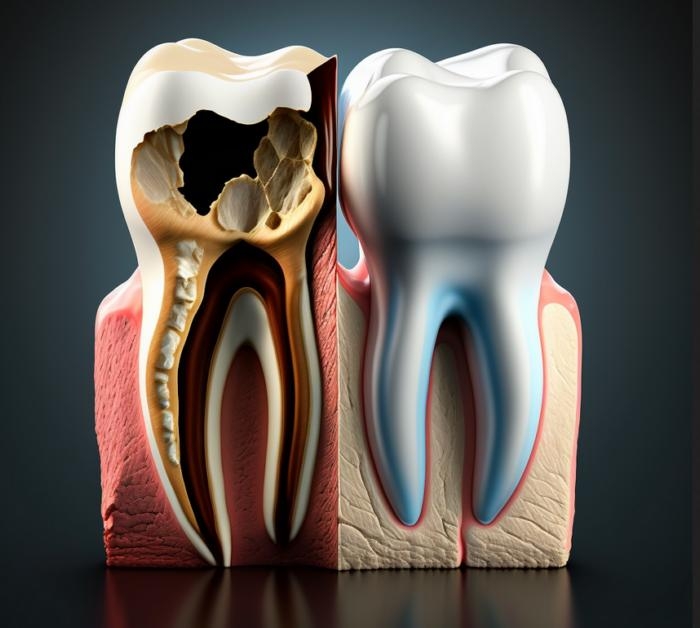Regenerative Endodontics: A Paradigm Shift

A New Hope for Teeth: Coming Soon to a Mouth Near YouIt's a tale as old as time: you bite into an apple, and suddenly, you're Ben Franklin, missing teeth and all. Or you're just a regular person with a toothache, and your dentist greets you with that horrifying smile that says, "it's time for a root canal." Well, fear not, fellow tooth-havers, for the world of dentistry is on the cusp of something groundbreaking. Enter regenerative endodontics, the new dental hero that's ready to swoop in and save the day – or at least your teeth.
From Root Canals to Regrowth: The Dental RevolutionFor years, the idea of regenerating lost or damaged tissue has been the stuff of science fiction. Think Wolverine, but with teeth instead of claws. Regenerative endodontics aims to achieve just that, using the body's natural healing abilities to regrow parts of the tooth that have been lost or damaged due to injury, infection, or general wear and tear.
Now, before you start getting visions of regenerating entire teeth overnight, let's get one thing straight: we're talking about the pulp and the dentin inside the tooth. That's right, the stuff you never knew you had until it started causing you excruciating pain.
Regenerative endodontics is still in its infancy, but the early results are promising. In fact, it's becoming clear that this approach is more than just a new fad in the world of dentistry. It's a paradigm shift, a total rethinking of how we treat dental issues and a move towards a more holistic approach to oral health.
Out with the Old, In with the NewSo, what exactly is this fancy-sounding new dental procedure? Regenerative endodontics is a treatment that aims to replace the traditional root canal with a more natural, biologically-based method. In simpler terms, instead of drilling and filling, dentists aim to coax the damaged tissue to regenerate itself.
The current root canal treatment involves removing the infected or damaged pulp, cleaning the tooth's interior, and then sealing it with a rubbery material called gutta-percha. While this procedure is effective at stopping the infection and saving the tooth, it has its drawbacks. Namely, it's about as fun as getting a tooth pulled by a team of wild horses.
Regenerative endodontics, on the other hand, aims to keep the tooth alive and kicking. By encouraging the body to regenerate the damaged tissue naturally, dentists can help to preserve the tooth's overall structure and vitality, giving it a much better chance of surviving any future shenanigans you might put it through.
Science at Work: Stem Cells, Blood Clots, and Dental PulpSo, how exactly does regenerative endodontics work its magic? The key to this process lies in the wonderful world of stem cells. These amazing little cells have the ability to differentiate into various types of tissues, making them a crucial component of the body's natural healing process.
In the case of regenerative endodontics, dentists use these stem cells to help stimulate the formation of new blood vessels and the development of dental pulp. By creating a small blood clot inside the tooth, they can encourage these stem cells to congregate at the site of the damage and start working their regenerative magic.
The end goal is to create a healthy, living tooth that is free from infection and able to function normally. It's like having your very own Tooth Fairy on call, ready to swoop in and save your pearly whites at a moment's notice.
Are You Ready for the Regenerative Revolution?Regenerative endodontics may still be in its early stages, but it's clear that this is a game-changing approach to dental treatment. As more research is conducted and techniques are refined, there's no doubt that this new method will become a staple in dental offices everywhere.
But before you go running to the nearest dentist demanding a regenerative root canal, keep in mind that this treatment is still relatively new and not yet widely available. So, for now, you might want to hold off on biting into that rock-hard baguette or using your teeth as a bottle opener.
That being said, the future of dentistry is bright – and a lot less painful – thanks to regenerative endodontics. So the next time you find yourself dreading a trip to the dentist, just remember: your mouth is one step closer to becoming a self-healing, tooth-regenerating wonderland.
|
|







